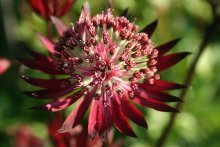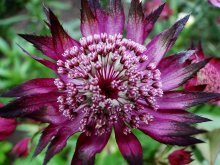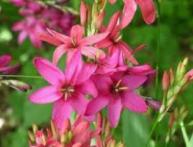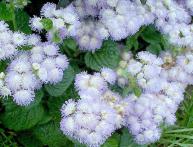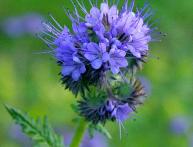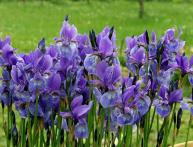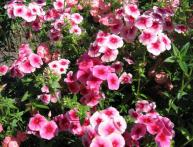Astrantia large: how to properly grow a star in the garden without hassle
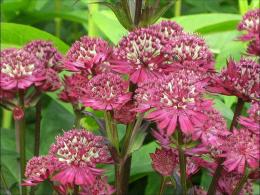
Information article about an ornamental plant from the Umbrella family, astrantia large. Description of the flower, choice of planting location. Methods of propagation of large astrantia, planting and care.
A plant with a beautiful star name Astrantia from the Umbrella family may be inferior in beauty to the sophisticated rose, but still it has its fans. Otherwise, it would not have taken root in all European gardens, where it appeared at the very beginning of the 16th century.
This popularity applies to several species, including the species large astrantia or large star. The perennial lush flower is unpretentious. The perennial will appeal to those who like to arrange areas with a natural landscape in their garden. We will try to find out where large astrantia likes to grow, how it reproduces, and the features of growing and caring for it.
Content:
- Brief description of large astrantia, choosing a place for it in the garden
- How to plant large astrantia
- Astrantia care
Brief description of large astrantia, choosing a place for it in the garden
Astrantia or stars have another name. The Swedes call them “daughters of Linnaeus”, since it was this botanist who made the description and gave the name to the plant. Large astrantia can be called the sister of dill, which was lucky to be born a star in the Umbrella family.
It grows wild in the western regions of Europe.Prefers to grow in mixed forests, on open edges. The plant is perennial, has a developed rhizome, stems up to 0.7 m in height. The leaves are beautiful, palmate, have from 3 to 7 lobes.
They form a beautiful rosette at the root. The flowers are small, white-pink, with a pleasant aroma. They are collected in inflorescences - umbrellas. Below the umbrella is a wrapper, which is shaped like an asterisk. Thanks to the wrapper that does not fall off for a long time, the plant retains its decorative appearance for a long time. Fresh used for cuttings in bouquets, and in dry form helps florists in composing dry compositions.
The best varieties

Currently, garden areas that look natural, like a corner of a forest or meadow, are becoming fashionable. To do this, you can plant both wild-growing large astrantia and its cultivated varieties:
- Rubra - a low, up to 0.4 m variety with pink flowers and pink wrapper, self-seeding, like a wild plant
- Moira Reid - flowers and involucre are white, the tips of the involucre are green
- Snowstar - flowers are white, the color of the wrapper is also white, but with visible green veins
- Clarette - purple flowers and wrapper
Choosing a landing site
All the beauty of astrantia inflorescences appears in good sunlight, however, you should not plant them in strong sun. A small shadow on the side is acceptable. If you plant a plant under the openwork crown of some trees, it will also hardly lose its decorativeness.
Any garden or garden soil that contains a certain amount of humus and other useful substances is suitable. It is best if it is fertile loamy or sandy loam soil with moderate moisture. If the land is poor, then adding humus, turf soil and sand will correct the situation.
How to plant large astrantia
Before planting astrantia, it is important to know that the plant can grow in one place for up to seven years, and does not respond very well to frequent transplants, so it is advisable to immediately place it in a permanent place. If there is already a bush of this flower in the garden, then young bushes can be used as planting material.
They appear in the spring as a result of self-seeding. You can also use an adult bush for propagation by dividing the bush or pieces of rhizome. Astrantia is grown by direct sowing of seeds in the soil. This is usually done before winter. Seeds and rhizomes can be prepared independently or purchased at a retail chain.
Planting by seeds
No special soil preparation is required; it is enough to dig to a depth of more than 15 - 20 cm. It is advisable to sow the seeds in the fall, they need long-term natural stratification. For sowing, make a furrow 1.5 cm deep. Sow the seeds. Cover the groove with soil. Its layer is no more than 0.5 cm. Close landings mulching layer of peat.
If you managed to buy the seeds at the end of winter, then you need to sow astrantia immediately after the ground has thawed by 15 cm. When favorable weather arrives in the spring, shoots appear on the surface. At the age of three to four weeks they need to be thinned out. When propagated by seed, the plant most often blooms in the third or even fourth year.
Video about what astrantia looks like:
Propagation by rhizomes
If planting material is prepared independently, then pieces of rhizomes can be planted both in the spring, when the above-ground parts begin to grow, and in the fall. To do this, it is enough to make holes at a distance of 10 - 15 cm and place pieces of rhizomes in them. Water and cover with soil.If a piece of rhizome is purchased at the end of winter or early spring, it can be grown at home.
A small pot with fertile soil is suitable for this. At the beginning of summer, the resulting seedling can be transplanted to a permanent place.
Despite the fact that the plant is quite resistant to low temperatures, it is still better to wait until stable positive values are established, and only then replant seedlings. Such seedlings bloom in the second or third year.
Bush division
Adult bushes aged 5 - 7 years are suitable for this. You can divide and plant in a new place either in the spring or in the fall. Delenki bloom within a year. Vegetative propagation methods are more suitable for hybrid and rare varietal plants.
Astrantia care
After planting young plants, it is important to provide them with sufficient moisture and remove weeds in a timely manner. During the summer, flowering plants need to be watered once every 6-7 days, if there is no natural precipitation. If there is excessive drought, the flowering period can be sharply shortened.
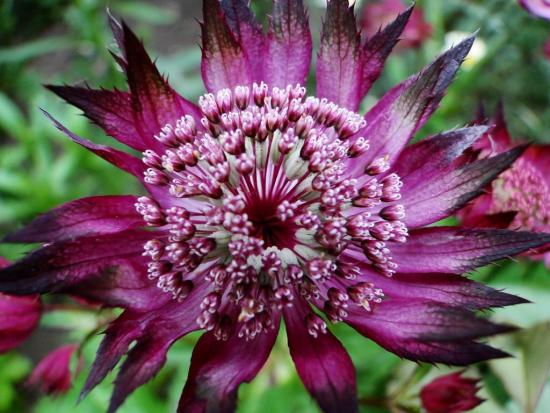
Timely pruning of fading inflorescences prolongs the flowering period. Before the onset of winter, all above-ground parts must be cut off. If there is a threat of severe frost, you can mulch the planting areas with compost or humus.
It is important to know that in addition to the fact that large astrantia will be an unpretentious, but very decorative plant in the garden, it can be used in traditional medicinee. If there is a need to cleanse the body due to various poisonings, then a decoction can be prepared from the roots and other parts of the plant that will help to do this.

